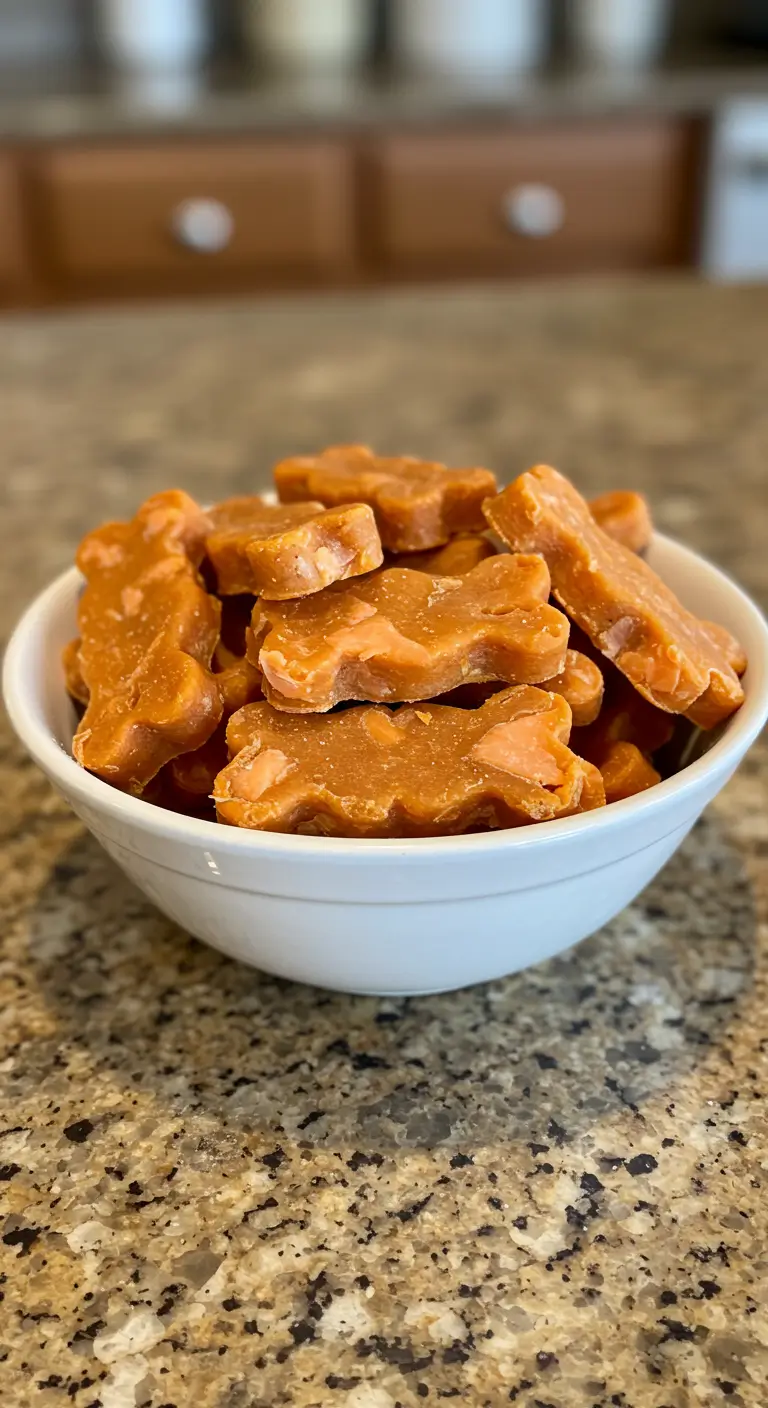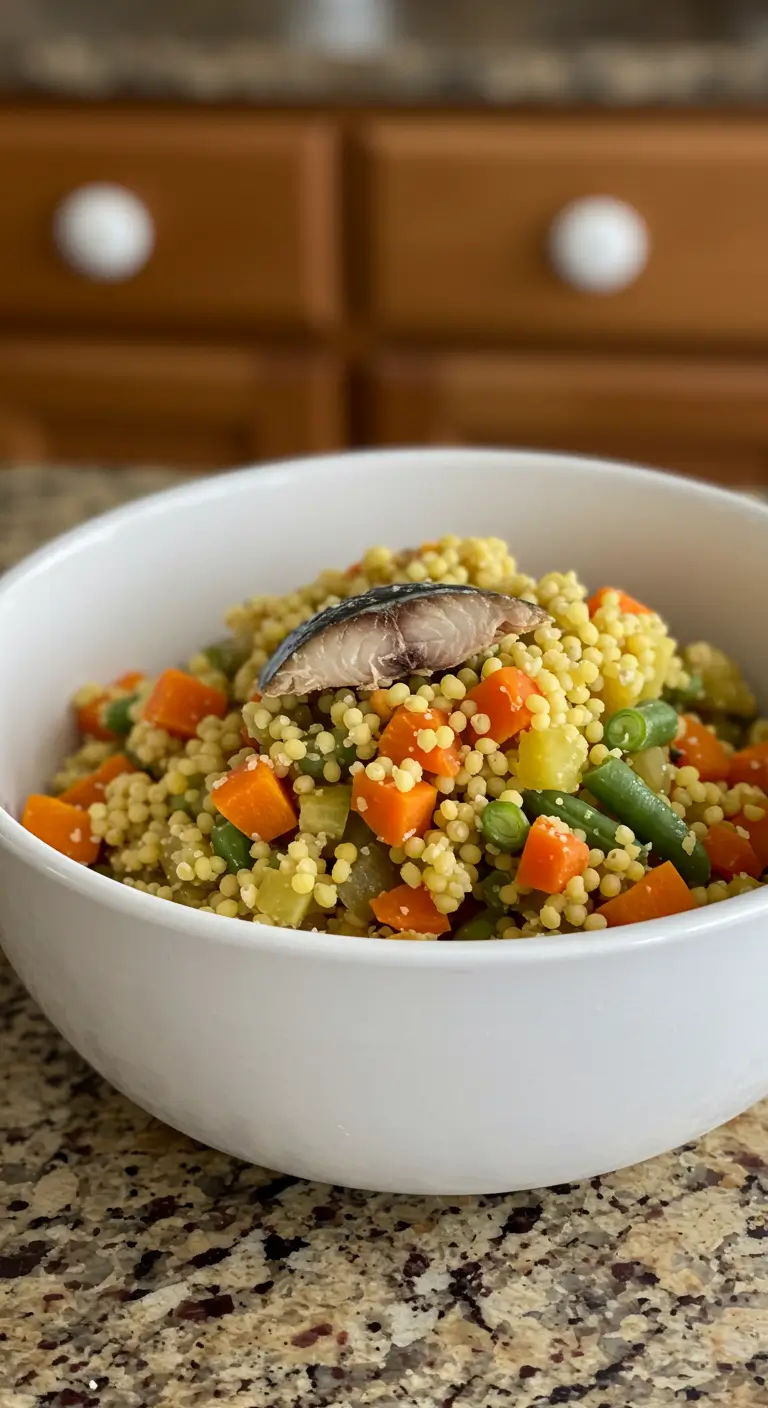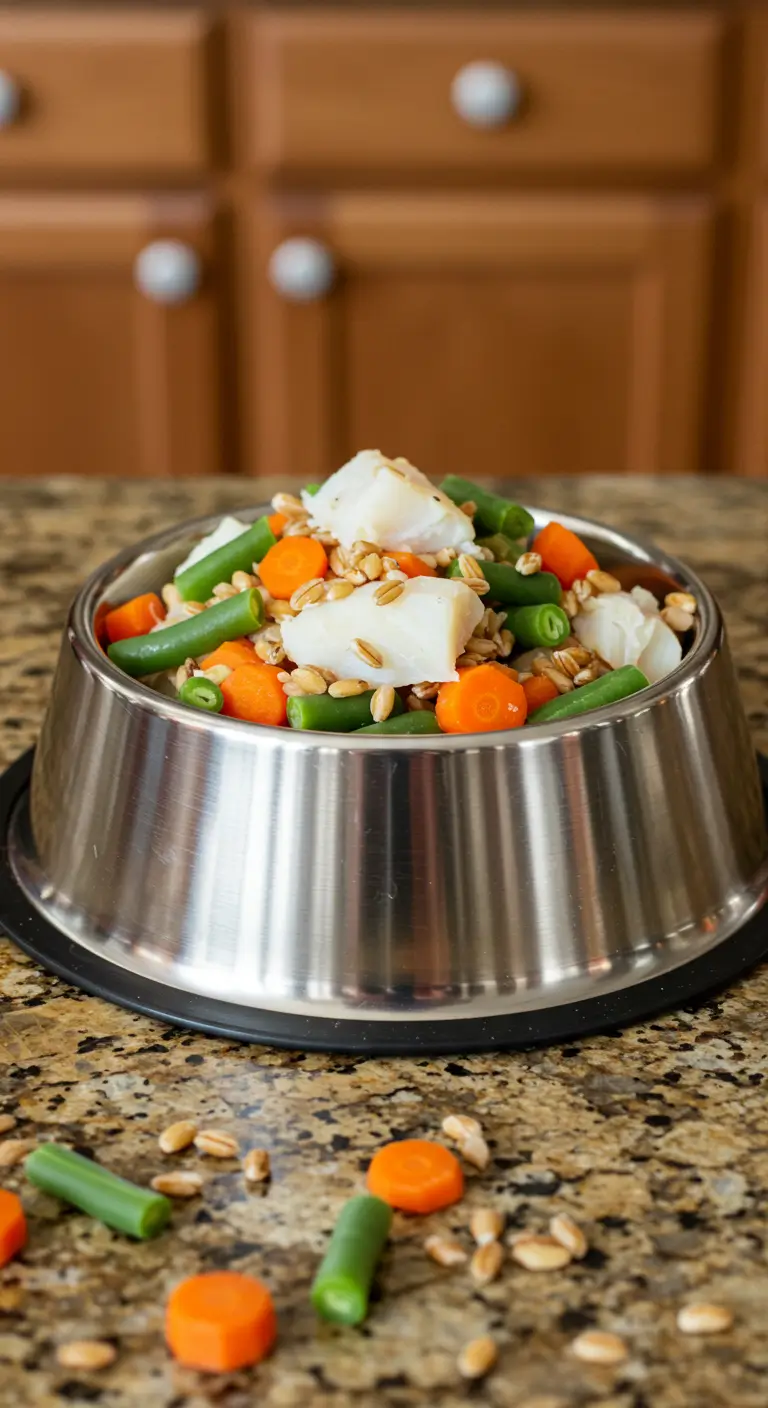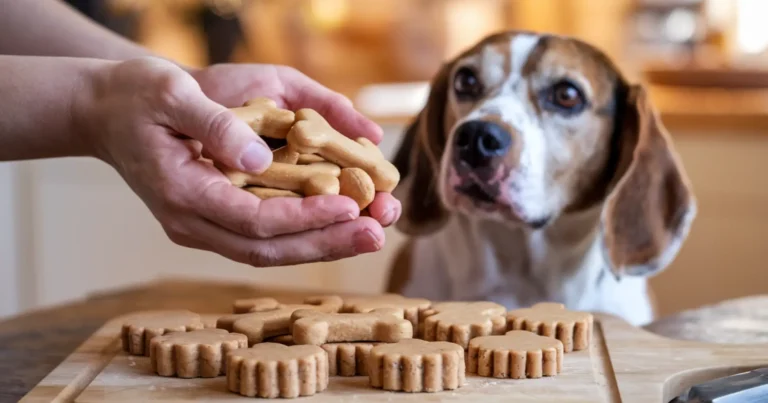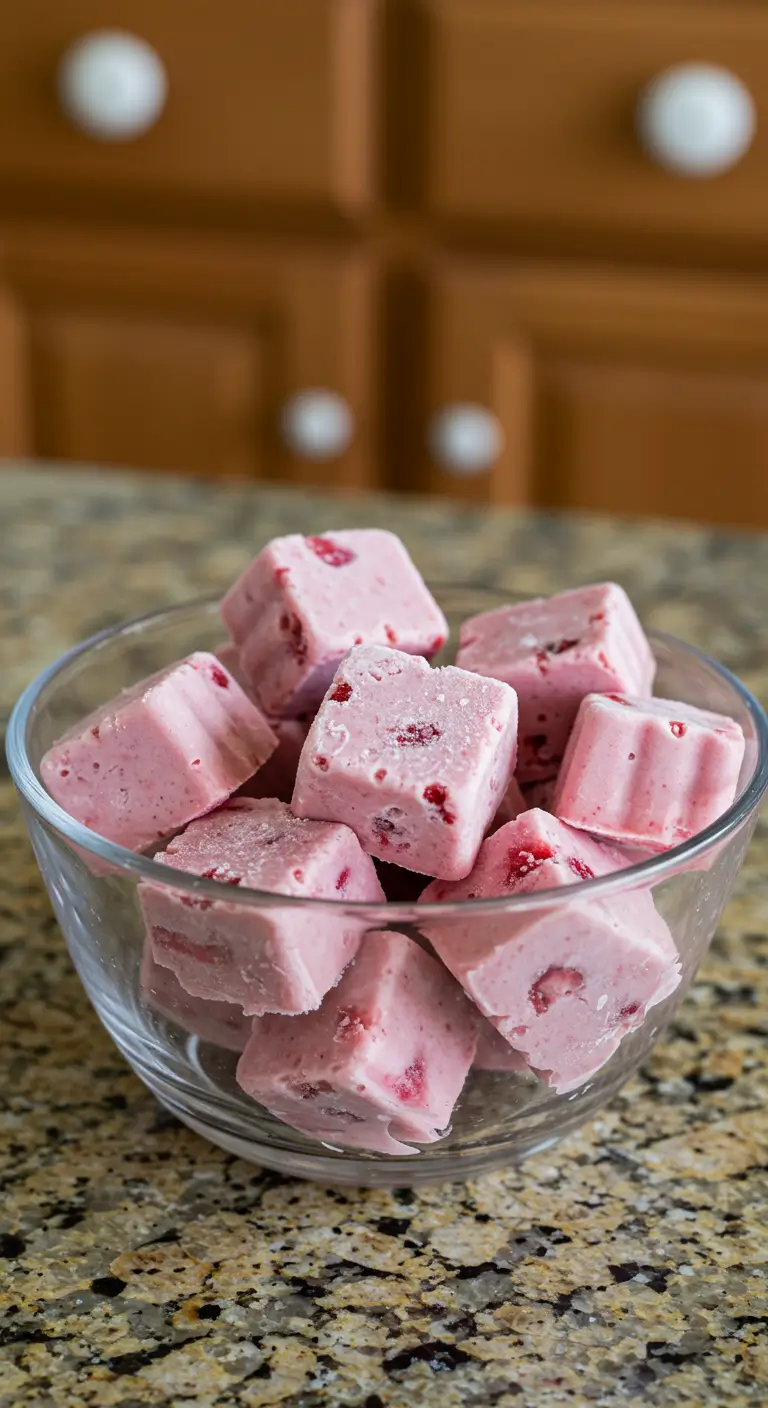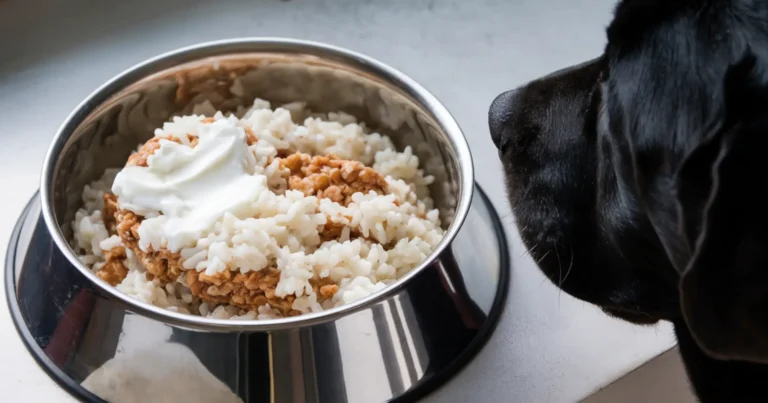7 Perfect Soft and Chewy Dog Treats for Adult Dogs
Last month, I watched Benji struggle with his usual crunchy biscuits after a minor dental cleaning at the vet. My normally enthusiastic treat-destroyer was gingerly nibbling around the edges, clearly uncomfortable with the hard texture. That’s when I realized how many dogs probably face similar challenges, whether from age, dental sensitivity, or simply preferring gentler textures.
This experience sparked my deep dive into creating soft and chewy dog treats that deliver all the nutrition and joy of traditional treats without the jaw workout. What I discovered changed everything about how I approach homemade dog treats. These soft and chewy dog treats aren’t just easier on teeth – they’re actually superior for training, more appealing to picky eaters, and offer better nutrient absorption thanks to their tender texture.
After months of testing and tweaking, I’ve perfected seven distinct recipes that cover every flavor profile and nutritional need your adult dog could want. Each recipe brings something unique to the table, from training effectiveness to specialized health benefits.
Table of Contents
Why Adult Dogs Crave Soft and Chewy Dog Treats

The difference between crunchy and soft treats goes far beyond texture preference. When dogs bite into soft and chewy dog treats, they immediately release flavors and aromas that hard biscuits keep locked away. This enhanced palatability makes these treats incredibly effective for training sessions, especially with food-motivated dogs who get distracted by having to work too hard to enjoy their reward.
Three Key Advantages:
- Enhanced flavor release creates stronger motivation during training
- Reduced jaw strain benefits senior dogs and those with dental issues
- Better hydration from natural moisture content supports overall health
For adult dogs, particularly those over five years old, the benefits become even more pronounced. Many dogs develop minor dental sensitivities that owners never notice because they’re stoic about discomfort. Soft and chewy dog treats eliminate any potential jaw strain while still providing the satisfaction of chewing and the reward experience that makes training successful.
The moisture content in these treats also aids in hydration, an often-overlooked benefit that’s especially valuable for dogs who don’t drink enough water or live in dry climates. Unlike their crunchy counterparts, soft and chewy dog treats retain natural moisture from ingredients like sweet potatoes, fruits, and quality proteins.
The Science Behind Perfect Soft Texture
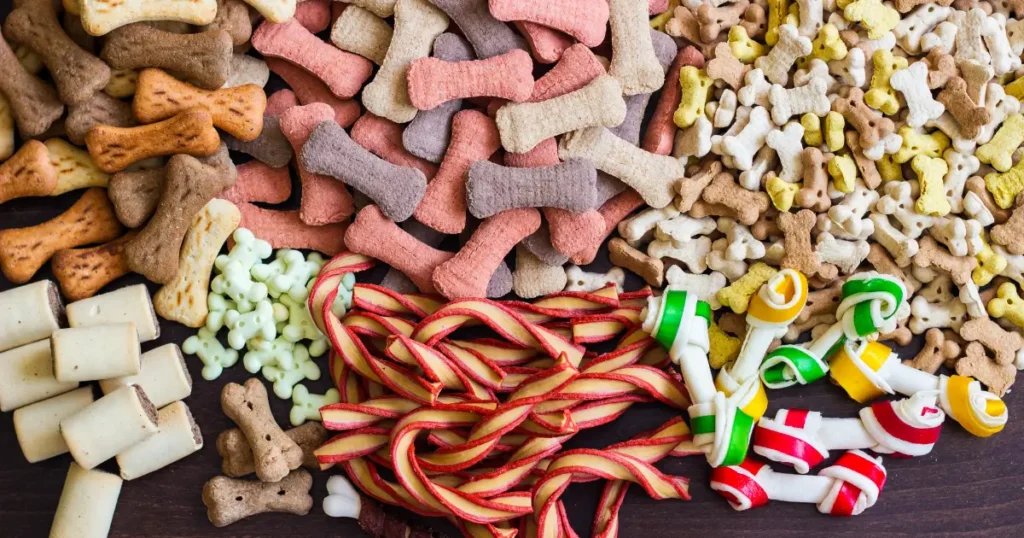
Creating ideal soft and chewy dog treats requires understanding how different ingredients interact during baking. The key lies in balancing moisture-retaining elements with binding agents that hold everything together without creating a dense, gummy result.
“The magic happens when you combine proteins that naturally hold moisture with carbohydrates that create structure – it’s all about finding that perfect balance.”
Temperature control during baking becomes crucial for soft and chewy dog treats. Instead of the high-heat approach that creates crispy textures, these recipes rely on moderate temperatures that cook ingredients thoroughly while preserving the tender consistency. The cooling process is equally important – letting treats rest properly allows moisture to redistribute evenly throughout each piece.
Different protein sources contribute unique textural qualities to soft and chewy dog treats:
| Protein Type | Texture Result | Best For |
|---|---|---|
| Chicken | Tender, easily digestible | Training sessions |
| Lamb | Rich, substantial chew | Special occasions |
| Salmon | Delicate, flaky | Health benefits |
| Beef | Hearty, satisfying | Larger breeds |
| Duck | Luxuriously soft | Gourmet experiences |
| Eggs | Smooth, gentle | Sensitive stomachs |
Professional bakers emphasize three critical factors for consistent results with soft and chewy dog treats: moisture balance, binding agent selection, and controlled cooling. The ideal moisture content ranges between 15-25%, compared to crunchy treats that drop below 12%.
Chicken & Rice Soft Bites
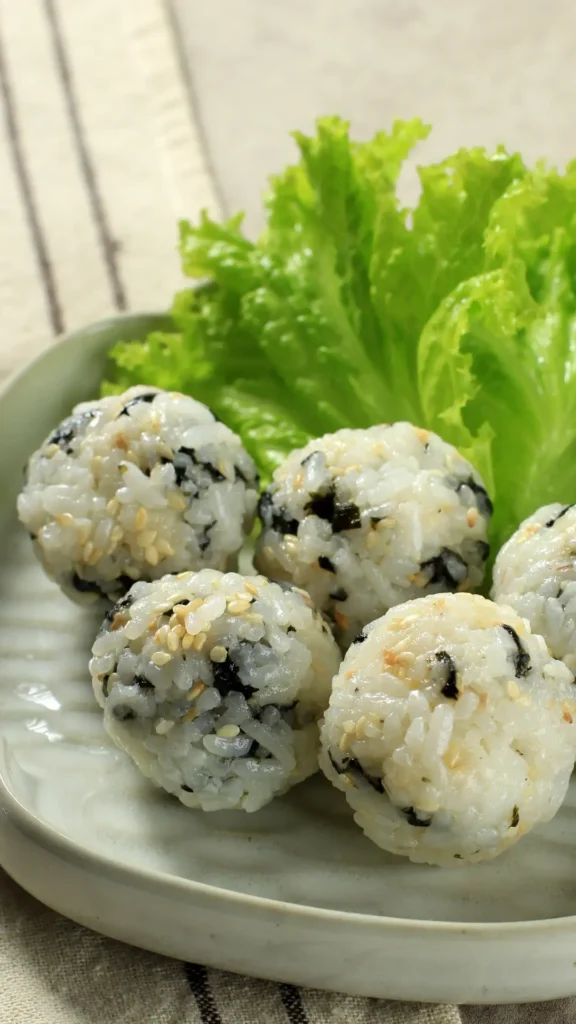
Of all the soft and chewy dog treats I make, chicken and rice combinations rank highest for training effectiveness. The familiar flavors appeal to virtually every dog, while the soft texture allows for quick consumption without losing focus during training sessions.
What Makes These Special:
- Rice provides gentle carbohydrates that digest easily
- Perfect for dogs with sensitive stomachs
- Quick consumption means a faster return to training focus
- Cost-effective ingredients are available everywhere
The preparation process involves cooking chicken thoroughly before incorporating it into the treat mixture, ensuring food safety while developing rich flavors that dogs find irresistible. Ground rice flour creates the perfect binding base, while a touch of chicken broth adds extra appeal without overwhelming the delicate balance of ingredients.
These Chicken & Rice Soft Bites work exceptionally well for rapid-fire training scenarios where you need your dog to quickly consume and refocus. The soft texture means no crunching sounds to distract from commands, and the appealing aroma keeps motivation high throughout extended training sessions.
The protein quality in chicken makes these treats suitable for daily use without overwhelming your dog’s digestive system. The amino acid profile supports muscle maintenance and energy production, while the rice component provides steady energy release that won’t cause sugar spikes.
Turkey & Cranberry Chews
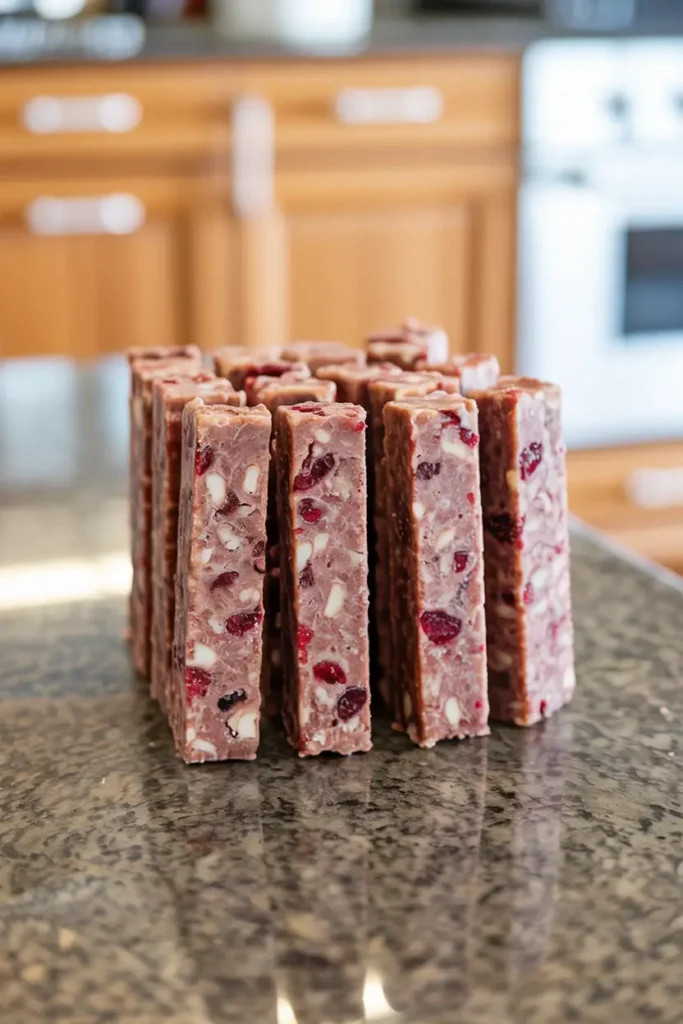
Turkey brings a distinctive flavor profile that many dogs prefer over chicken, especially those who’ve developed sensitivities to more common proteins. Combined with cranberries, these soft and chewy dog treats deliver antioxidants alongside exceptional taste.
Health Benefits Include:
- Antioxidant support from cranberries
- Urinary tract health benefits
- Novel protein for sensitive dogs
- Selenium boost for immune function
The natural tartness of cranberries complements turkey’s mild richness, creating sophisticated Turkey & Cranberry Chews that appeal to discerning canine palates. When choosing cranberries for dog treats, fresh or frozen varieties work best, though dried cranberries without added sugar can substitute when fresh ones aren’t available.
The texture of turkey-based soft and chewy dog treats tends to be slightly denser than chicken versions, providing more substantial chewing satisfaction. This makes them excellent for dogs who enjoy working through their treats rather than gobbling them immediately. The natural oils in turkey help maintain moisture, ensuring these treats stay soft for extended periods when stored properly.
Turkey’s nutritional profile offers several advantages for adult dogs. Higher levels of selenium support immune function, while the B-vitamin complex promotes healthy metabolism and nervous system function. The protein digestibility of turkey equals that of chicken while providing a novel protein source for dogs with sensitivities.
Lamb & Mint Soft Treats
Lamb offers a distinctive protein source that’s particularly valuable for dogs with common protein allergies. Its rich, distinctive flavor pairs beautifully with fresh mint, creating soft and chewy dog treats that seem almost gourmet in their sophistication.
Why This Combination Works:
The natural oils in lamb contribute to exceptional softness while providing essential fatty acids that support skin and coat health. Fresh mint adds more than just flavor to these Lamb & Mint Soft Treats – it naturally freshens breath while providing antioxidants and digestive support.
“Benji’s reaction to these was immediate – his eyes lit up like I’d just offered him a five-star meal. The mint seemed to create this cooling sensation he found fascinating.”
Working with lamb in soft and chewy dog treats requires attention to fat content, as it’s naturally higher in fat than poultry. This richness contributes to the tender texture that makes these treats so appealing, but it also means they’re best given in moderation. The higher fat content does help preserve moisture, making these among the longest-lasting soft treats in terms of maintaining their ideal texture.
The nutritional benefits of lamb extend beyond protein content. Lamb provides higher levels of iron than most other proteins, supporting healthy blood cell formation and oxygen transport. The zinc content promotes immune function and wound healing, while the B-vitamin complex supports energy metabolism and nervous system health.
Mint selection becomes important when creating these soft and chewy dog treats. Fresh spearmint or peppermint works best, though dried mint can substitute in smaller quantities. Always use culinary-grade mint and avoid decorative varieties that might contain harmful compounds.
Salmon & Sweet Potato Chews
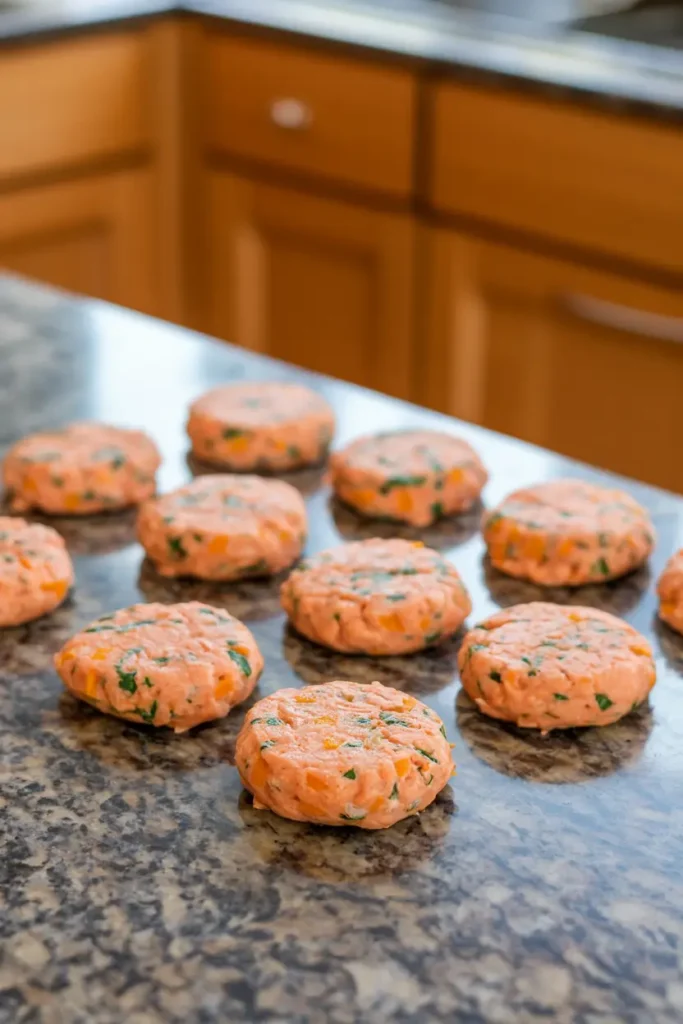
Nothing demonstrates the nutritional superiority of homemade soft and chewy dog treats quite like salmon and sweet potato combinations. Wild-caught salmon provides omega-3 fatty acids that support joint health, cognitive function, and coat shine, while sweet potatoes deliver beta-carotene and fiber in a naturally sweet package.
Nutritional Powerhouse Benefits:
- Omega-3 fatty acids for joint and brain health
- Beta-carotene for immune system support
- Natural binding properties from sweet potatoes
- Anti-inflammatory compounds throughout
The natural moisture in both salmon and sweet potatoes creates Salmon & Sweet Potato Chews that stay soft without requiring additional preservatives or artificial humectants. Sweet potatoes also contribute natural binding properties, helping hold ingredients together while adding subtle sweetness that enhances the salmon’s rich flavor.
These soft and chewy dog treats often become favorites among dogs who typically show little interest in fish-based foods. The sweet potato’s familiar flavor seems to make the salmon more approachable, while the omega-3s provide long-term health benefits that extend far beyond treat time. The vibrant orange color from sweet potatoes also makes these visually appealing treats.
Processing considerations for salmon-based soft and chewy dog treats involve careful temperature control to preserve the delicate omega-3 fatty acids while ensuring food safety. The natural oils in salmon can become rancid if exposed to high temperatures for extended periods, so these treats benefit from the lower-temperature baking approach.
Storage requirements for these soft and chewy dog treats lean toward the more cautious end due to the fish content. Refrigeration becomes essential, and the treats should be consumed within five days of baking for optimal safety and nutrition.
Duck & Blueberry Soft Bites
Duck represents one of the most underutilized proteins in homemade soft and chewy dog treats, despite offering exceptional flavor and nutritional benefits. Its higher fat content creates naturally tender treats that practically melt in dogs’ mouths.
What Makes Duck Special:
Duck’s nutritional profile offers several unique advantages in soft and chewy dog treats. Higher levels of iron support healthy blood cell formation, while the selenium content promotes immune function and thyroid health. The B-vitamin complex in duck supports energy metabolism and nervous system function.
Paired with blueberries, these Duck & Blueberry Soft Bites become antioxidant powerhouses that support immune function while delivering irresistible flavors. Blueberries contribute natural sweetness without requiring added sugars, while their soft texture integrates seamlessly into treat dough.
| Ingredient | Primary Benefits | Texture Contribution |
|---|---|---|
| Duck | Iron, selenium, B-vitamins | Rich, tender base |
| Blueberries | Antioxidants, natural sweetness | Soft bursts of flavor |
| Combined | Cognitive support, immune boost | Luxurious mouthfeel |
The richness of duck means these soft and chewy dog treats should be given somewhat sparingly, making them perfect for special occasions or high-value training rewards. Dogs often show intense enthusiasm for duck-based treats, perhaps recognizing the novelty of this less common protein source.
Preparation techniques for duck-based soft and chewy dog treats benefit from slightly longer cooking times to ensure the higher fat content doesn’t create greasy textures. The natural richness of duck requires careful balance with other ingredients to achieve the ideal soft texture without overwhelming dogs’ digestive systems.
Beef & Carrot Nuggets
For dogs who prefer traditional meat flavors, beef and carrot combinations create substantial, soft, and chewy dog treats that satisfy hearty appetites. Lean ground beef provides familiar flavors that appeal to most dogs, while carrots add natural sweetness, beta-carotene, and subtle texture variety.
Why This Classic Combination Works:
- Familiar beef flavors appeal to traditional tastes
- Natural sweetness from carrots balances richness
- Substantial texture satisfies larger breeds
- High protein density supports active lifestyles
Carrots contribute natural moisture to these Beef & Carrot Nuggets while adding beneficial fiber that supports digestive health. Their mild sweetness complements beef’s rich flavor without overwhelming it, creating balanced treats that appeal to dogs across all taste preferences. Grating carrots finely ensures even distribution throughout each treat while maintaining the soft texture.
The substantial nature of beef-based soft and chewy dog treats makes them excellent for dogs who enjoy more filling rewards. They work particularly well for larger breeds who might consume smaller treats too quickly to appreciate their flavors. The protein density also makes them valuable for active dogs who need substantial nutrition to support their energy requirements.
Beef selection becomes important when creating these soft and chewy dog treats. Lean ground beef works best, as excessive fat can create greasy textures that dogs may find less appealing. The protein quality of grass-fed beef often produces superior flavor and nutritional profiles, though conventional beef works well when grass-fed options aren’t available.
“These are Benji’s go-to treats when he’s been especially good during our weekend hikes. Something about the hearty beef flavor seems to match his adventurous mood perfectly.”
Processing considerations for beef-based soft and chewy dog treats involve thorough cooking to ensure food safety while maintaining the tender texture that makes them appealing. Ground beef cooks more quickly than whole muscle cuts, allowing for the moderate temperatures that preserve optimal texture in soft treats.
Egg & Oatmeal Soft Bites
Sometimes, the simplest combinations create the most effective soft and chewy dog treats. Eggs provide complete protein with exceptional digestibility, while oatmeal delivers fiber, B vitamins, and a naturally soft texture that requires minimal processing to achieve ideal consistency.
Perfect for Dogs With:
- Sensitive stomachs or food allergies
- Need for gentle, easily digestible nutrition
- Preference for milder flavors
- Requirements for budget-friendly options
The binding properties of eggs in these Egg & Oatmeal Soft Bites eliminate the need for artificial additives while creating treats that hold together beautifully during baking and storage. Oatmeal’s natural moisture-absorbing qualities help achieve perfect texture consistency, while its mild flavor appeals to dogs who prefer less intensely flavored treats.
These soft and chewy dog treats often become go-to options for dogs with sensitive stomachs or food allergies. The combination creates nutritionally complete treats that work well as meal supplements, providing sustained energy without digestive challenges.
Nutritional Analysis Shows:
- Complete amino acid profile from eggs
- Slow-release carbohydrates from oatmeal
- B vitamin complex for energy metabolism
- Fiber content supporting digestive health
Preparation flexibility makes these soft and chewy dog treats excellent for customization. Additional ingredients like small amounts of fruits or vegetables can be incorporated without compromising the basic texture or nutritional balance. This adaptability makes them perfect base recipes for dogs with specific dietary requirements.
Essential Baking Techniques for Consistent Success
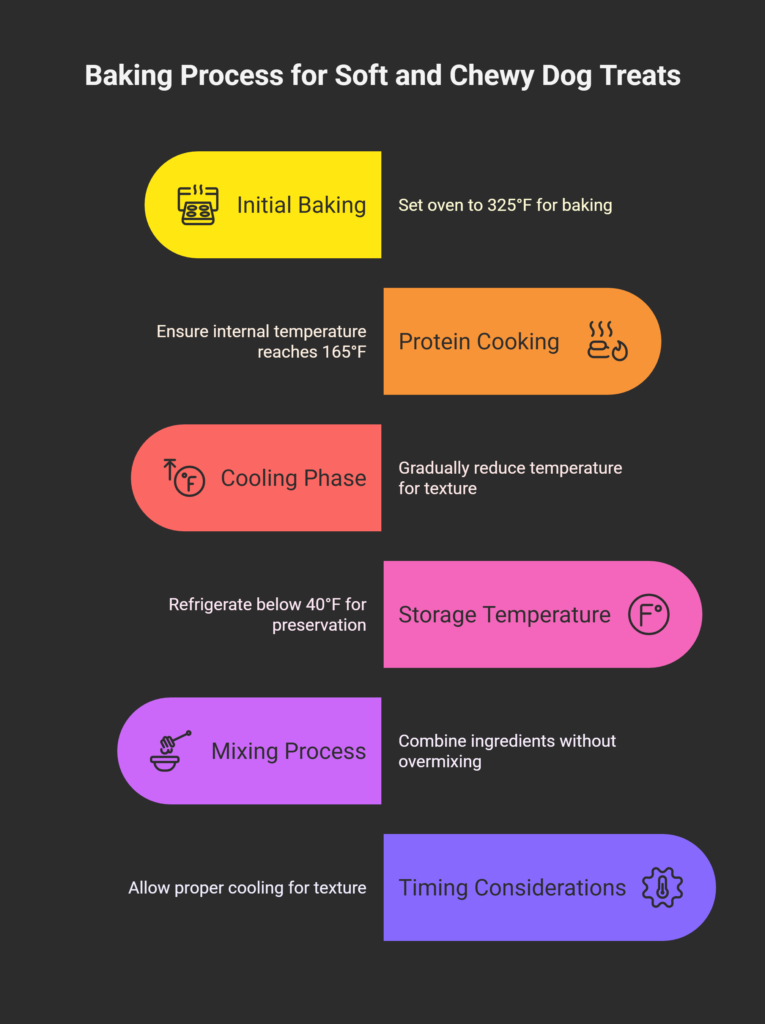
Creating consistently excellent soft and chewy dog treats requires understanding several key principles that differ from traditional baking approaches. Temperature control emerges as the most critical factor, with successful treats requiring moderate heat that cooks ingredients thoroughly without driving off the moisture that creates the desired texture.
Temperature Guidelines:
- Initial baking: 325°F for most recipes
- Protein cooking: 165°F internal temperature for safety
- Cooling phase: Gradual temperature reduction
- Storage temperature: Refrigeration below 40°F
The mixing process for soft and chewy dog treats involves achieving proper ingredient integration without overworking the dough. Unlike bread or cookie doughs that benefit from extended kneading, treat doughs should be mixed just until ingredients combine uniformly. Overmixing can develop tough textures that contradict the soft, tender results you’re seeking.
Timing considerations for soft and chewy dog treats extend beyond just baking duration. The cooling process significantly impacts final texture, with proper cooling allowing moisture to redistribute throughout each treat. Rushing this step often results in uneven textures that compromise the eating experience.
Ingredient quality becomes even more important with soft and chewy dog treats than with crunchy varieties because flavors remain more pronounced in the softer textures. Fresh proteins, quality flours, and properly stored ingredients contribute significantly to both taste and nutritional value.
Storage Solutions That Preserve Quality
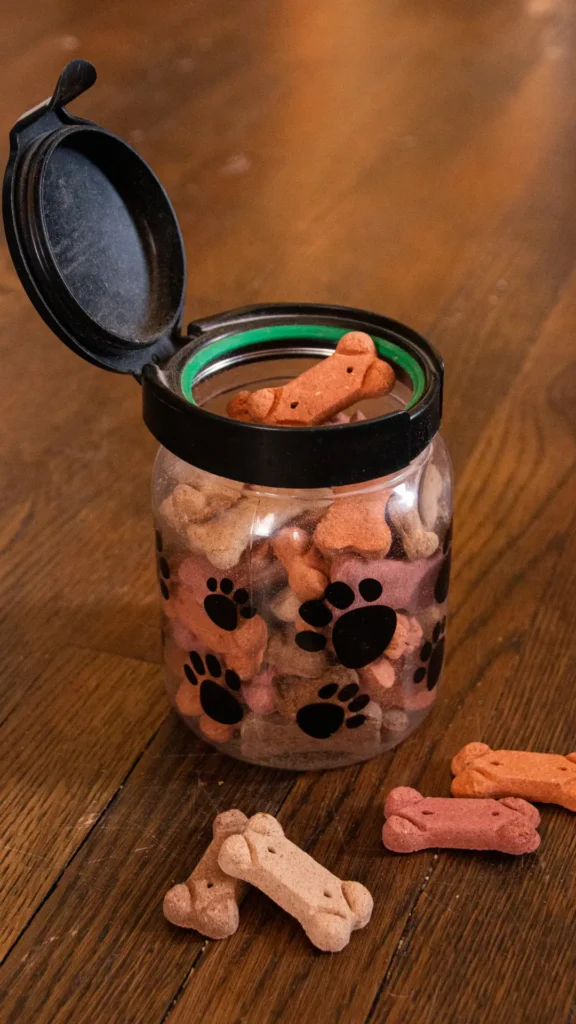
Proper storage techniques become crucial for maintaining the quality of soft and chewy dog treats due to their higher moisture content compared to crunchy alternatives. The approach differs significantly from storing traditional baked goods.
Short-term Storage (1-7 days):
- Airtight glass containers prevent moisture loss
- Refrigeration is required for meat-based recipes
- Single layers prevent sticking and texture changes
- Paper towel lining absorbs excess condensation
Long-term Storage (1-3 months):
- Vacuum sealing maintains optimal texture
- Portion into weekly servings before freezing
- Label clearly with contents and date
- Thaw only what you need to maintain quality
Temperature management during storage significantly impacts the shelf life of soft and chewy dog treats. Refrigeration extends freshness for most recipes, typically maintaining quality for 7-10 days compared to 3-4 days at room temperature. Some recipes with higher fat content may require refrigeration for food safety rather than just quality maintenance.
Portion control during storage simplifies daily use while preventing contamination of entire batches. Dividing treats into daily or weekly portions before storage means you’re only exposing small quantities to air and handling each time you need treats.
Training Applications That Transform Results

The superior training effectiveness of soft and chewy dog treats stems from several practical advantages that become apparent during actual training sessions. Quick consumption means faster return to focus, while intense flavors create strong positive associations with correct behaviors.
Training Advantages Include:
| Benefit | Soft Treats | Crunchy Treats |
|---|---|---|
| Consumption time | 2-3 seconds | 15-30 seconds |
| Noise level | Silent | Crunching sounds |
| Focus retention | Immediate | Delayed |
| Portion flexibility | Easily broken | Fixed sizes |
Training scenarios requiring rapid repetition benefit enormously from soft and chewy dog treats that don’t create distracting crunching sounds. The enhanced aroma release from soft textures maintains motivation even during longer training sessions, while the easy digestibility prevents stomach upset that could interrupt learning momentum.
Different soft treat flavors can communicate varying levels of reward, with richer proteins like duck or lamb reserved for breakthrough moments, while simpler egg and oatmeal varieties work well for routine reinforcement. This variety prevents boredom while maintaining training effectiveness across different scenarios.
“The difference in Benji’s training focus when we switched to soft treats was remarkable – like someone had suddenly turned up the volume on his attention span.”
Size management becomes easier with soft and chewy dog treats because they can be broken apart easily to match reward levels with achievement significance. Small pieces work well for basic command reinforcement, while larger portions celebrate major training milestones.
Health Benefits Beyond Basic Nutrition
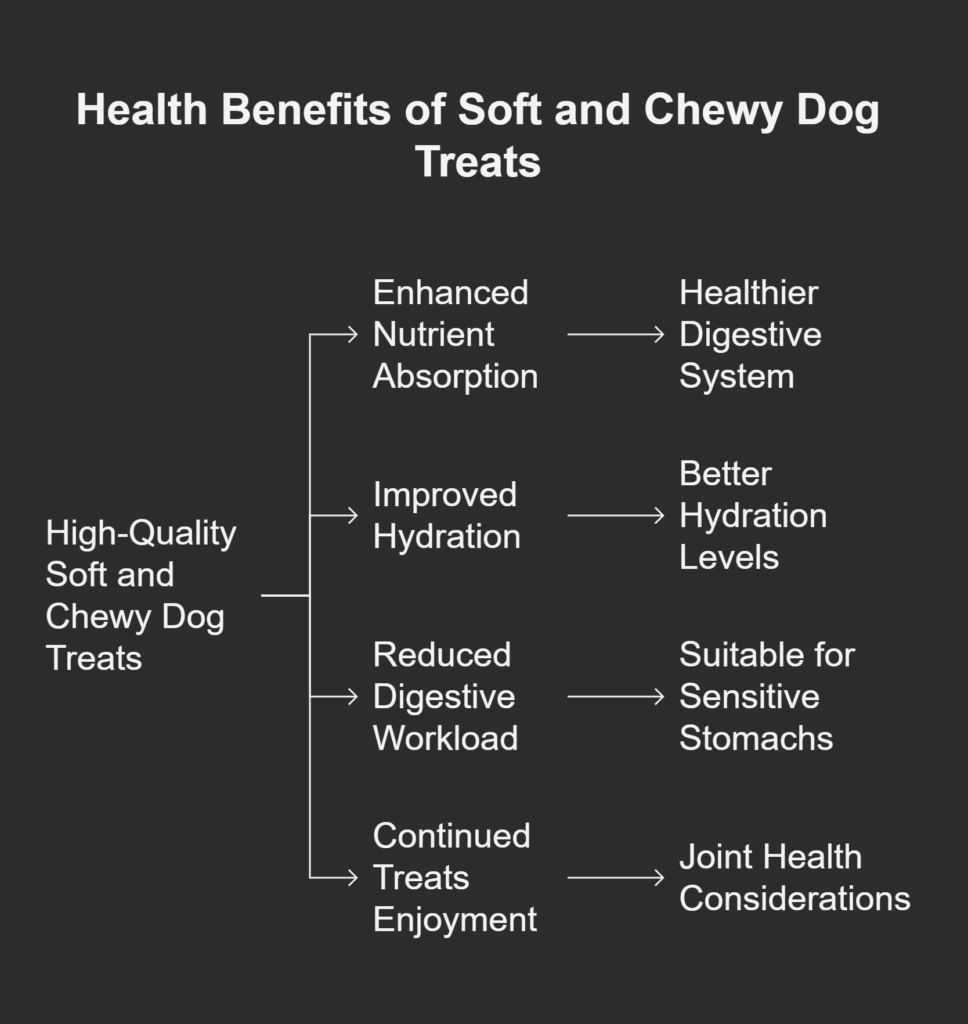
Beyond their basic nutritional value, high-quality soft and chewy dog treats have numerous health benefits. The enhanced bioavailability of nutrients in soft textures means dogs absorb more nutrition from each treat compared to harder alternatives that might pass through their digestive systems partially unprocessed.
Key Health Improvements:
- Enhanced nutrient absorption from softer textures
- Improved hydration from natural moisture content
- Reduced digestive workload for sensitive stomachs
- Continued treats enjoyment for dogs with dental issues
Hydration support from the natural moisture content in soft and chewy dog treats benefits dogs who don’t drink adequate water independently. This becomes particularly valuable for senior dogs whose thirst response may diminish with age, or dogs living in dry climates where water loss occurs more rapidly.
Digestive ease characterizes soft and chewy dog treats due to their texture, requiring less mechanical breakdown before swallowing. This reduces digestive workload and makes treats suitable for dogs with sensitive stomachs or digestive issues that make harder treats problematic.
Joint health considerations favor soft and chewy dog treats for dogs with jaw arthritis or temporomandibular joint issues. The reduced chewing force required prevents pain while still providing the psychological satisfaction that comes from treat consumption.
Troubleshooting Common Texture Issues
When soft and chewy dog treats turn out too dense or gummy, the solution usually involves adjusting the moisture-to-flour ratio in subsequent batches. Understanding these adjustments helps ensure consistent results across different baking sessions.
Common Problems and Solutions:
Problem: Treats too hard after cooling.
Solutions:
- Increase moisture ingredients by 10-15%
- Reduce baking temperature by 25°F
- Extend cooling time in a covered container
Problem: Treats fall apart or crumble.
Solutions:
- Add more binding agents (eggs, flour)
- Ensure thorough mixing without overworking
- Check expiration dates on leavening agents
Problem: Gummy or dense texture
Solutions:
- Reduce liquid ingredients slightly
- Avoid overmixing the dough
- Increase baking time by 2-3 minutes
Treats that become too hard during storage often indicate insufficient moisture content in the original recipe or improper storage conditions. Adding moisture-rich ingredients like applesauce or pumpkin puree to future batches helps maintain desired softness, while proper storage containers prevent moisture loss.
Temperature variations during baking can significantly affect soft and chewy dog treats, with even small fluctuations potentially altering final texture. Using oven thermometers ensures accuracy, while adjusting timing based on visual cues rather than strict schedules often produces better results.
Cost Analysis: Homemade vs Commercial
Cost analysis consistently demonstrates the economic benefits of producing soft and chewy dog treats at home compared to purchasing premium commercial alternatives. The savings become even more significant when you factor in the superior ingredient quality and customization options.
Financial Comparison:
| Treat Type | Commercial Cost | Homemade Cost | Annual Savings |
|---|---|---|---|
| Premium soft treats | $18-25/lb | $4-6/lb | $400-600 |
| Training treats | $15-20/lb | $3-5/lb | $350-500 |
| Specialty diet | $20-30/lb | $5-8/lb | $450-650 |
Quality homemade soft and chewy dog treats typically cost 60-80% less per serving while offering superior ingredient control and customization options. Bulk ingredient purchasing further reduces costs while ensuring a consistent supply for regular production.
Equipment investment for soft and chewy dog treats remains minimal compared to many cooking hobbies. Basic kitchen tools handle most preparation needs, while simple storage containers manage finished products effectively. The return on investment becomes apparent within just a few batches.
Time efficiency improves with practice, allowing experienced bakers to produce a week’s supplies of soft and chewy dog treats in a single preparation session. Batch cooking techniques and proper planning minimize active preparation time while maximizing output.
Advanced Customization Techniques

Once you’ve mastered basic soft and chewy dog treats, customization opens endless possibilities for addressing specific needs and preferences. Understanding how different modifications affect texture and nutrition allows for precise adjustments.
Seasonal Adaptations:
- Spring: Fresh herbs and lighter proteins for renewed energy
- Summer: Extra moisture content for hot weather hydration
- Fall: Pumpkin and apple additions for seasonal variety
- Winter: Heartier proteins and warming spices for cold weather
Age-related modifications become relevant as dogs mature, with senior dogs potentially benefiting from softer textures and adjusted nutritional profiles. Puppy adaptations might involve smaller sizes and modified nutritional content appropriate for growth requirements.
Health condition accommodations demonstrate the flexibility of homemade soft and chewy dog treats. Recipes can be adjusted for dogs with diabetes, kidney issues, or other health concerns that require dietary modifications. This customization capability represents a significant advantage over commercial alternatives.
Special Dietary Modifications:
| Condition | Recipe Adjustments | Recommended Recipes |
|---|---|---|
| Diabetes | Reduce carbohydrates, increase protein | Chicken & Rice |
| Kidney issues | Lower protein, controlled phosphorus | Egg & Oatmeal |
| Allergies | Single novel proteins | Lamb & Mint |
| Arthritis | Anti-inflammatory ingredients | Salmon & Sweet Potato |
Professional-quality soft and chewy dog treats often incorporate techniques borrowed from commercial food production, adapted for home kitchens. Steam injection during baking helps maintain moisture while ensuring food safety, though this requires careful timing to prevent overhydration.
Food Safety Considerations
Higher moisture content in soft and chewy dog treats creates environments where bacteria could potentially grow if proper food safety protocols aren’t followed. Understanding these risks and implementing appropriate precautions ensures both treat quality and pet safety.
Critical Safety Practices:
- Cook all proteins to 165°F internal temperature
- Cool treats completely before storage
- Maintain clean preparation surfaces and utensils
- Refrigerate within 2 hours of baking
- Trust your senses – discard questionable treats
Spoilage concerns with soft and chewy dog treats require vigilance due to their higher moisture content. Visual inspection for mold, texture changes, or off odors should precede each use, with questionable treats discarded immediately.
Ingredient freshness takes on added importance with soft and chewy dog treats since flavors remain more pronounced than in crunchy alternatives. Using high-quality, fresh ingredients not only improves taste and nutrition but also reduces the risk of introducing contaminants.
“I learned the hard way that cutting corners on food safety isn’t worth it – now I’m religious about proper cooling and storage procedures.”
Temperature monitoring during baking ensures that internal temperatures reach levels that eliminate potential pathogens while maintaining the desired texture. Using food thermometers helps verify that meat-based treats reach safe internal temperatures without overcooking to hardness.
Building Your Soft Treat Program
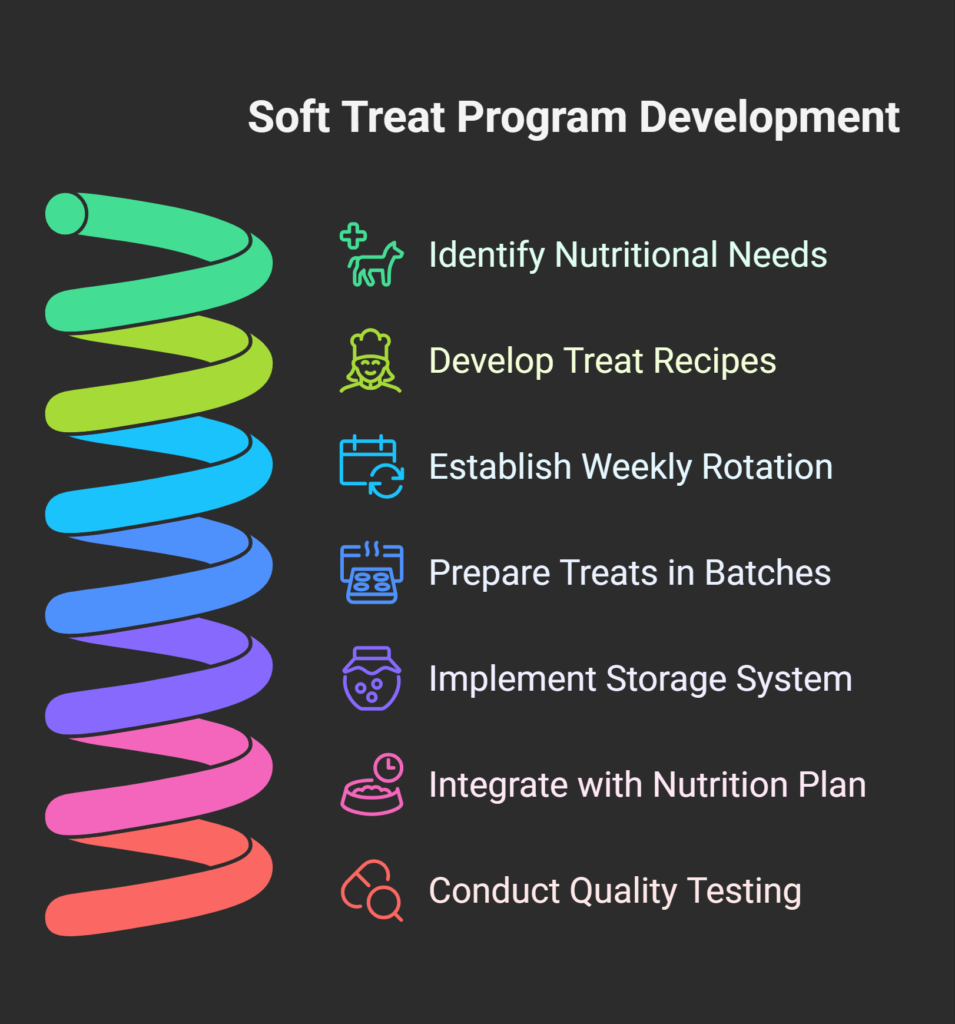
Developing a rotation of different soft and chewy dog treats ensures that your dog enjoys variety while meeting different nutritional and training needs. Having multiple recipes ready allows you to match treats to specific situations – lighter options for frequent training sessions, richer varieties for special rewards.
Weekly Rotation Strategy:
- Monday-Tuesday: Basic training with Chicken & Rice Soft Bites
- Wednesday-Thursday: Variety with Turkey & Cranberry Chews
- Friday: Special rewards with Duck & Blueberry Soft Bites
- Weekend: Gentle options like Egg & Oatmeal Soft Bites
Batch preparation and proper storage systems make it practical to maintain supplies of various soft and chewy dog treats without constant baking. Preparing different recipes on rotating schedules ensures fresh options while spreading preparation time across manageable sessions.
Integration with your dog’s overall nutrition plan ensures that treats complement rather than compromise balanced feeding. Accounting for treat calories in daily nutrition calculations maintains proper body weight while maximizing the joy and training effectiveness that quality soft treats provide.
Quality testing throughout the process ensures consistent results with soft and chewy dog treats. Checking texture at various stages helps identify and correct issues before they affect entire batches, while regular taste testing by your dog confirms that palatability meets expectations.
Future Trends and Innovations
As more dog owners recognize the benefits of homemade nutrition, soft and chewy dog treats represent a growing segment of home pet food preparation. The ability to customize recipes for individual needs while avoiding commercial additives appeals to health-conscious pet parents who want the best for their companions.
Emerging understanding of canine nutrition continues to inform better treat recipes that support specific health goals beyond basic nutrition. Soft and chewy dog treats provide ideal vehicles for functional ingredients that support joint health, cognitive function, or digestive wellness while maintaining the palatability that makes treat time special.
Technology integration might eventually include apps for tracking nutritional content or timing optimization, but the fundamental satisfaction of creating quality soft and chewy dog treats by hand will likely remain appealing to dedicated dog owners who value the personal touch.
The bond-strengthening aspect of creating homemade soft and chewy dog treats provides emotional benefits that extend beyond nutrition and training effectiveness. The process itself becomes a form of care expression that dogs seem to recognize and appreciate, strengthening the human-canine relationship in measurable ways.
Essential Success Principles
Creating exceptional soft and chewy dog treats represents a perfect blend of art and science that yields rewards far beyond the treats themselves. The process strengthens the bond between you and your dog while providing superior nutrition and training tools that enhance daily life together.
Understanding the principles behind successful soft treat production – moisture management, temperature control, and proper storage – enables consistent results that dogs find irresistible. The seven recipes I’ve shared represent just the beginning of possibilities when you master these fundamental techniques.
Key Success Factors:
- High-quality ingredients have the greatest impact on the outcome.
- Temperature control determines texture more than any other factor
- Proper storage extends freshness and maintains food safety
- Consistent technique produces reliable results across batches
- Dog feedback guides recipe selection and modifications
The economic and health benefits of homemade soft and chewy dog treats make them attractive alternatives to commercial options, while the satisfaction of creating something that brings such obvious joy to your dog makes the effort deeply rewarding.
Quality ingredients, careful preparation, and proper storage ensure excellent results that support your dog’s health and happiness. The immediate enthusiasm that these tender, flavorful treats generate reminds us that small details can make enormous differences in our dogs’ lives.
Whether you’re drawn to the training effectiveness, the nutritional control, or simply the joy of creating something special for your companion, mastering soft and chewy dog treats opens up possibilities that extend far beyond treat time. For additional variety that complements these soft options perfectly, explore my complete collection of 10 easy crunchy homemade dog treats to give you the complete toolkit for all your dog’s preferences and training needs.
Frequently Asked Questions
How long do homemade soft and chewy dog treats stay fresh?
Homemade soft and chewy dog treats typically stay fresh for 5-7 days when stored in airtight containers in the refrigerator. The higher moisture content requires refrigeration to prevent spoilage, unlike crunchy treats that can last weeks at room temperature. For longer storage, freeze treats in weekly portions for up to 3 months while maintaining optimal texture and flavor.
Can I make these soft and chewy dog treats for puppies or senior dogs?
These recipes work wonderfully for adult dogs, but puppies and senior dogs have specific nutritional needs that may require modifications. Reduce the size of treats for puppies and make sure recipes don’t conflict with a diet that promotes balanced growth. Senior dogs often appreciate the soft texture, but may need reduced fat content depending on their health status. Always consult your veterinarian about appropriate treats for dogs with specific health conditions.
What’s the best way to adjust recipes for dogs with allergies?
Start by identifying your dog’s specific allergens and substitute accordingly. For chicken allergies, try Lamb & Mint Soft Treats or Salmon & Sweet Potato Chews. For grain sensitivities, replace regular flour with rice flour or coconut flour. Sweet potato can substitute for other carbohydrates if needed. Always add new ingredients gradually while keeping an eye out for any negative reactions.
Why do my soft and chewy dog treats sometimes turn out too hard or too soft?
Texture issues usually stem from moisture balance or temperature problems. If treats are too hard, increase moisture-rich ingredients like applesauce by 10-15% or reduce baking temperature by 25°F. If they’re too soft or fall apart, add more flour or binding ingredients like eggs. Oven temperature variations significantly affect results – use an oven thermometer for accuracy and adjust timing based on visual cues rather than strict schedules.
Can I use these recipes for intensive training sessions?
Absolutely! Soft and chewy dog treats are superior for training because they’re quickly consumed without distracting crunching sounds. Cut Chicken & Rice Soft Bites into tiny pieces for frequent rewards, or use Turkey & Cranberry Chews for major breakthroughs. The immediate palatability and enhanced aroma maintain focus throughout extended training sessions while preventing digestive upset from rapid consumption.
References
- American Veterinary Medical Association – Pet Nutrition Guidelines
- Association of American Feed Control Officials – Dog Treat Safety Standards
- Journal of Animal Science – Protein Digestibility in Canine Nutrition


